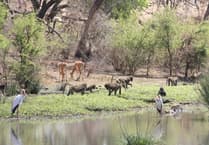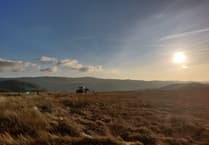Melting of glaciers in a major Alaskan icefield has accelerated and could reach an irreversible tipping point earlier than previously thought, new research involving Aberystwyth University suggests.
The research, involving scientists at Aberystwyth University, found that glacier loss on Juneau Icefield, which straddles the boundary between Alaska and British Columbia, Canada, has increased dramatically since 2010.
The team, which also included universities in the UK, USA and Europe, looked at records going back to 1770 and identified three distinct periods in how icefield volume changed.
They found that glacier loss remained consistent between 1770 and 1979 with up to one square kilometre lost a year – this had increased to over 3 square kilometres a year in the period 1979 to 2010.
Between 2010-2020 there was a sharp acceleration when the rate of ice loss doubled, reaching almost six square kilometres a year.
The research, published in Nature Communications, found that icefield-wide rates of glacier area shrinkage were five times faster between 2015 to 2019 than the 1948-1979 period.
Overall, the Juneau icefield lost a quarter of its original volume in the 250 years between 1770 and 2020.
This faster thinning of the glacier has been accompanied by increased glacier fragmentation.
The team mapped a dramatic increase in disconnections, where the lower parts of a glacier become separated from the upper parts.
100 per cent of glaciers mapped in 2019 have receded compared to their position in 1770, and 108 glaciers have disappeared completely.
Alaska contains some of the world’s largest plateau icefields and their melting is a major contributor to current sea level rise.
Dr Tom Holt from Aberystwyth University said: “It is really concerning to see the rapid and accelerating loss of glaciers from the Juneau Icefield.
“We know that climate-driven ice loss from glaciers and icefields contributes to rising global sea-levels. And Alaska is expected to remain the largest regional contributor to rising sea levels up to the year 2100.
“What this research highlights is that we have been under-estimating the amount of ice being lost from this particular icefield, which may also be the case for others located in the Arctic.
“The reduction in icefield area also seems to be contributing to a positive feedback loop: as the glaciers melt, their surfaces become darker as rock debris is exposed, reducing solar reflectivity – and increasing surface melt - further contributing to the loss of the glaciers.”





Comments
This article has no comments yet. Be the first to leave a comment.